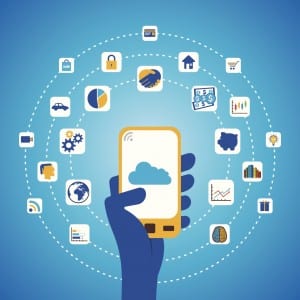 It was the best of times, it was the wurst of times, which is awesome because wurst is totally my jam. I’m talking about Düsseldorf, Germany of course. More specifically Ketchum Inspiration Day, which recently took place there. An annual event organized by Ketchum Pleon, Inspiration Day brings together clients, prospects and colleagues for a day of workshops, presentations and networking. I had the great honor of giving the opening keynote for the event. Fully aware of the caliber of previous Inspiration Day keynoters, such as Ben Foster and Bill Riehl, I had some mighty insightful shoes to fill. Luckily the theme this year was innovation, and there seems to be a lot of that going on in the communications world these days.
It was the best of times, it was the wurst of times, which is awesome because wurst is totally my jam. I’m talking about Düsseldorf, Germany of course. More specifically Ketchum Inspiration Day, which recently took place there. An annual event organized by Ketchum Pleon, Inspiration Day brings together clients, prospects and colleagues for a day of workshops, presentations and networking. I had the great honor of giving the opening keynote for the event. Fully aware of the caliber of previous Inspiration Day keynoters, such as Ben Foster and Bill Riehl, I had some mighty insightful shoes to fill. Luckily the theme this year was innovation, and there seems to be a lot of that going on in the communications world these days.
With the recent Mary Meeker report, Google’s #io15, and even buzz from CES still resonating, there was certainly enough to talk about. However, one theme rises above all else when we talk about innovation in brand communications today: the idea of access. In my keynote I spotlighted trends and companies, covering industry leaders like Google to upstarts such as Holus (home holograms; think Tupac on your coffee table). I talked about drones, conductive clothing (the potential to turn a jacket into an iPad-like device), smart appliances – even a water bottle that lights up when it thinks you need to drink more water. What do they all have in common? Unprecedented access to an entire spectrum of consumer information and data.
Before we brand marketers all jump for joy and run off to create the next virtual reality Tinder, we have to remember an even more important point. Access goes both ways. Consumers expect reciprocation for all this, and that needs to come in the form of transparency (click to tweet). They’re demanding more access to information that previously existed behind closed doors – like their own sleep patterns, degree of hydration, or number of eggs in the fridge. You can already see this in the areas of sourcing, labor practices, political affiliation, corporate responsibility, and a whole host of other items that didn’t used to factor in as much into a consumer’s decision to align with a brand. There is a great deal of trust involved when consumers allow sensors, GPS, cookies, financials, sign-in credentials and other private information to flow so seamlessly from their phones, devices and appliances into databases, algorithms, if/then scenarios, promotions and profiles. Brands are going to have to earn that by also opening up.
To me, the most interesting thing about the evolution of brand engagement is how closely it follows something we are already so familiar with: the human courtship cycle. Early marketing was all about predicting what media you would consume and trying to grab your attention there by being the most attractive. The next big jump happened when marketers could predict your intentions by targeting search queries or cookies to give you just what you needed. Today, it’s moved beyond that into targeting your actions. From the Amazon Dash button you press when you run out of detergent, to a perfect coupon when you are within 50 feet of that store, it’s all about being there for you in the moment.
So what’s next? Just like a successful courtship, the next big leap in engagement will be brand intimacy. Consumers are sharing information with brands that their own mothers aren’t even aware of. Health, financials, daily habits, purchases, location – this is a 24/7 thing. We’re now living together. And just like courtship, trust breeds loyalty, and trust requires access. Anything less, and you’re marketing from the couch.


